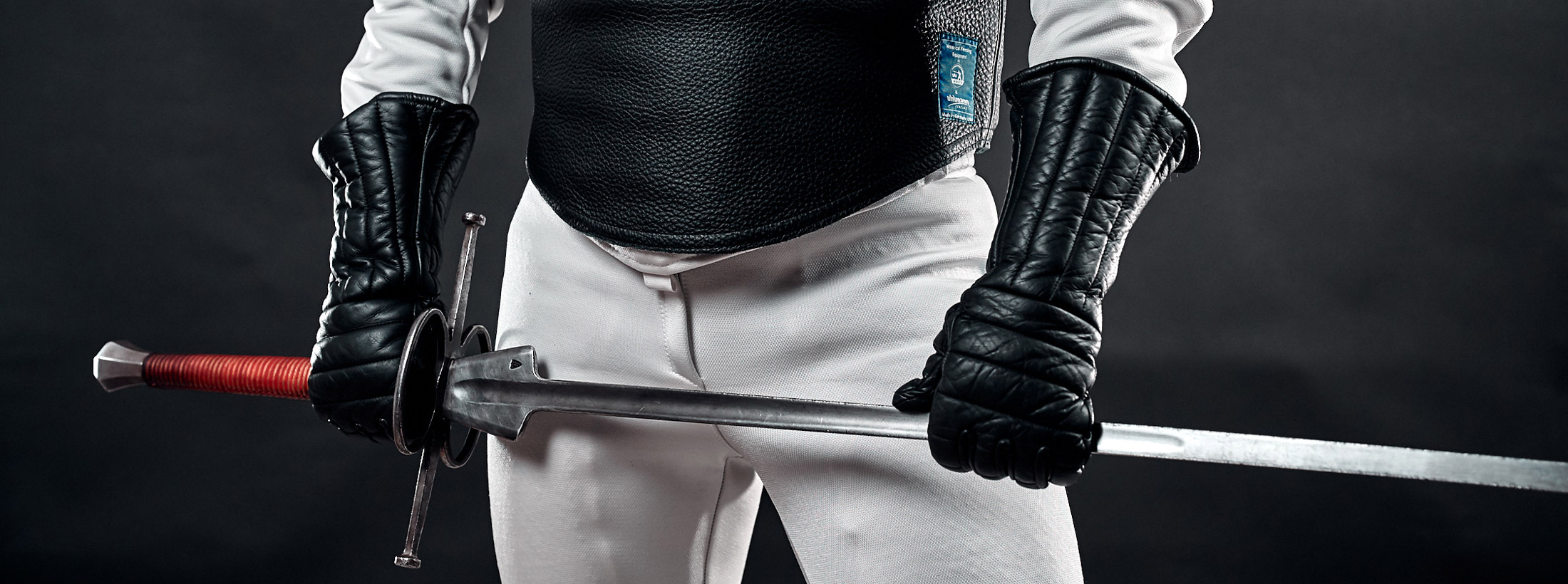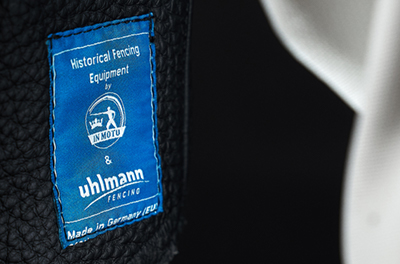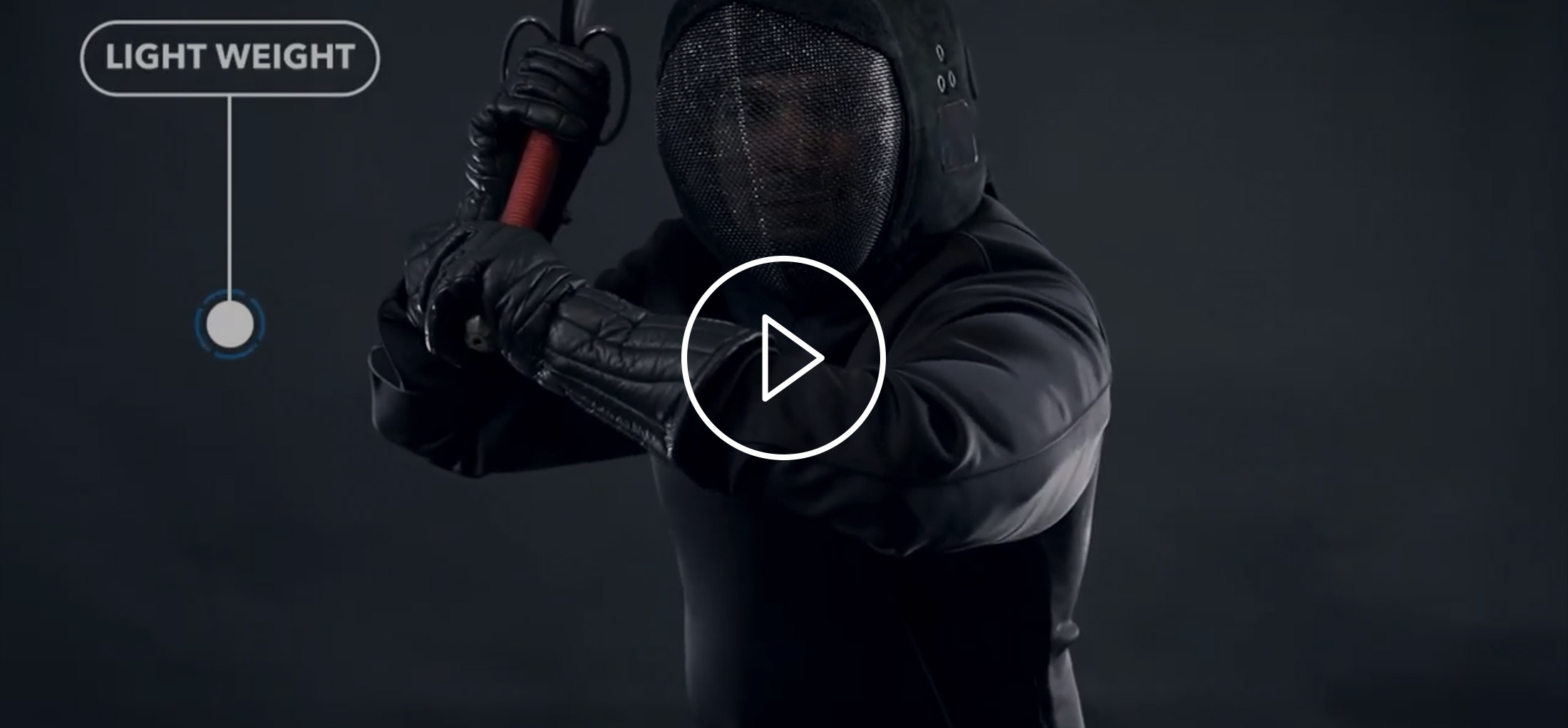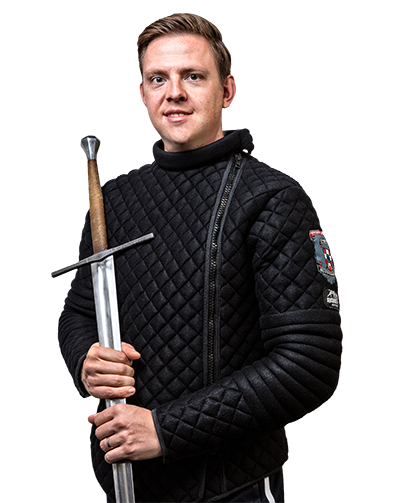Historical fencing
Historical fencing refers to a community that has been growing since the 1990s and, contrary to modern Olympic fencing, deals with the fencing styles of the past up to the early 20th century. The fencers work with old European text and image sources from the 14th to the early 20th century. The books by contemporary fencing teachers and students serve this purpose. The so far oldest fencing book dated from around 1300 and was probably written in Latin in a Franconian monastery.
Historical fencing is characterized by its diversity. The fencing categories differ according to the weapons of the respective epoch. For the 14th - 16th century this can be fencing with a sword, knife (similar to a saber), long sword (two-handed) or polearms. Very typical for this time and up into the 19th century is the connection with unarmed self-defense . With the Renaissance, rapiers, side swords, sabers, epees and foils became common weapons in contemporary fencing systems. Another variety of historical fencing is the abundant manifestations. There are groups that are more dedicated to the pure research of the ancient arts and a rapidly increasing number of fencers who also want to compete with others in the ancient arts and weapons in a sporting manner. So, there are different offers in many clubs and fencing schools.





